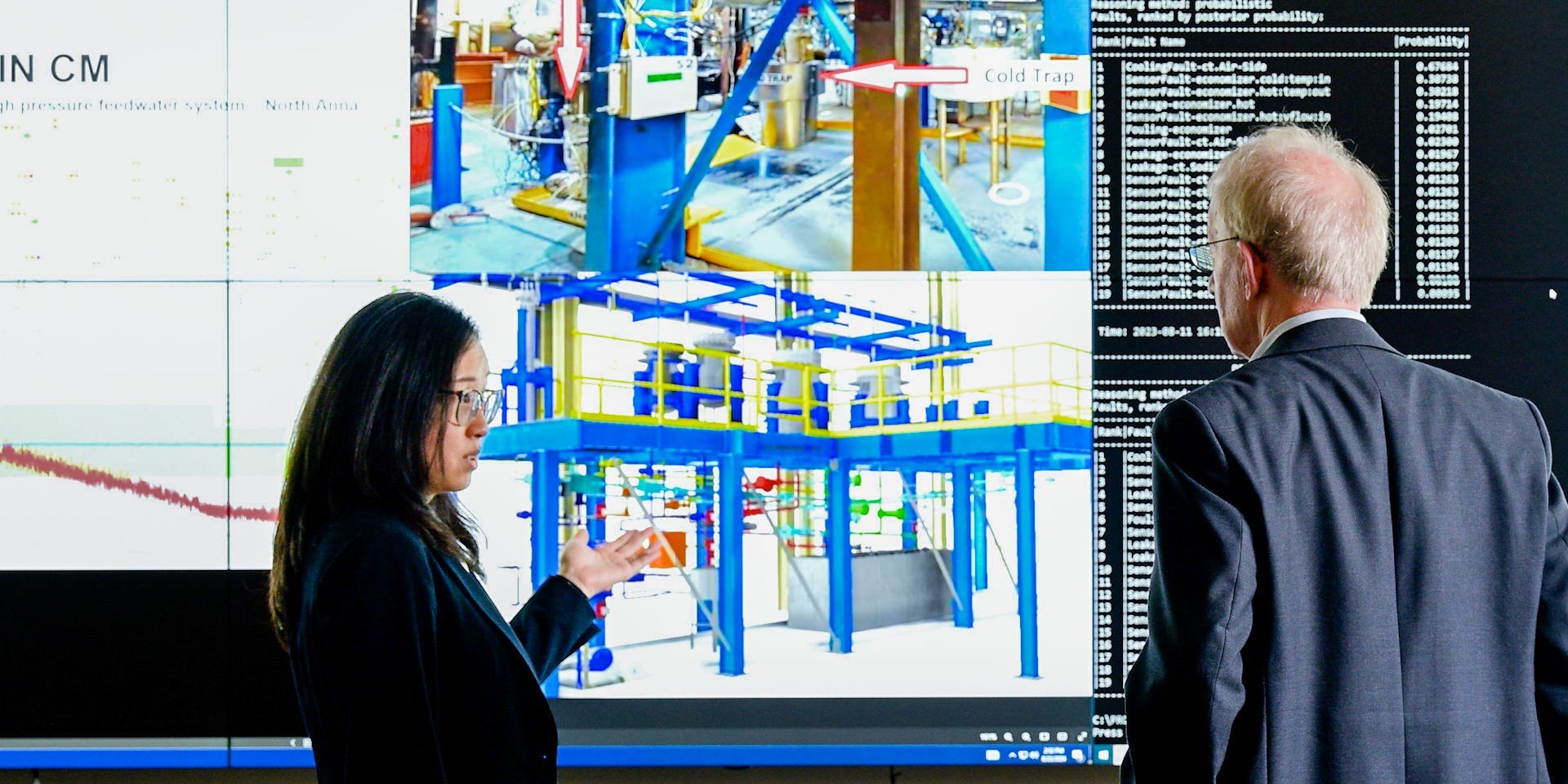
Argonne National Laboratory
The nuclear sector is approaching an inflection point where the need for a more reliable energy solution in the next few decades is about to confront an aging workforce that’s prime for retirement.
A big driver of nuclear demand — that is, artificial intelligence — may also be part of the solution.
“I think there’s sort of this two-way street on AI and nuclear,” Craig Piercy, CEO of American Nuclear Society, told Business Insider. “AI needs nuclear because AI needs energy to run the data centers that run AI. And then AI is going to help nuclear be more efficient.”
The US has seen a cyclical demand for nuclear power from the 1960s to the present.
A 1987 paper published by the International Atomic Energy Agency said that by 1970, about 90 nuclear units across 15 countries went online. However, by the next decade, growth slowed due to increased public resistance to nuclear energy, tighter government regulations, and the high-profile disaster at the Chernobyl Nuclear Power Plant in Ukraine.
Since then, nuclear power entered a period of inertia, which created a gap between experts with institutional knowledge and the industry’s future.
The Department of Energy found that 60% of the nuclear energy workforce was between the ages of 30 to 54. The agency said that a significant portion of the workforce is likely to retire over the next decade, which will lead to increased job opportunities in the sector.
“The nuclear industry has been stagnant for some time now,” Massimiliano Fratoni, chair of the nuclear engineering department at the University of California, Berkeley, told BI. “So a lot of the know-how got lost because people retire, so there is a need to catch up.”
The energy demand curve
Artificial intelligence — and the power-hungry data centers behind the technology — have put nuclear energy back on the map in just the past three years.
Big Tech companies like Microsoft and Amazon, which are fueling the AI demand, are investing in newer reactor designs such as small modular reactors (SMRs), driving what BI has called “a nuclear renaissance.”
Just four SMR companies, for example, have received nearly $3 billion in equity funding, BI previously reported.
It’s not only AI that’s driving the need for a reliable and constant source of energy.
Piercy, the American Nuclear Society CEO, said the US’s push toward electrification and domestic manufacturing, which has been a top priority for the second Trump administration, will also significantly increase energy demand.
“For the last 20 years or so, US electricity demand has essentially been flat. You could draw a straight line from 2007 to 2022,” he said, adding that the “demand curve” was at 1% or less. “In the last two years, we’re looking now at 2 or 3% energy demand growth over the next 10 years. Everyone’s assumptions about how much electricity we’re going to need have gone way up.”
As nuclear is increasingly considered an alternative energy solution, the Department of Energy estimated in 2023 that 375,000 additional workers with technical and non-technical backgrounds, such as construction and manufacturing, would be added to the sector over the next two decades.
“I think essentially what we’re looking at here is a tripling or more of the workforce by 2050,” Piercy said.
A digital assistant for nuclear workers
At Argonne National Laboratory, a federally funded R&D center located in the suburbs of Lemont, Illinois, the lab’s senior nuclear engineer, Richard Vilim, is finding ways to automate some jobs at nuclear plants, which may help with some of the lifting for the incoming workforce demand.
“Humans will always be there in the loop,” Vilim told BI in an interview. But there are what he called more “prosaic” tasks that could be assigned to a computer and help nuclear plants run more efficiently.
“For example, just monitoring if there’s anything going wrong. People, humans do that,” Vilim said. “Now you can assign that to an algorithm.”
One automation tool Vilim works with is PRO-AID, or Parameter-Free Reasoning Operator for Automated Identification and Diagnosis. It can be thought of as a digital assistant for monitoring and diagnosing reactors.
Vilim said the earliest iterations of PRO-AID were developed around the late 1990s. But over the next few decades, and with the arrival of ChatGPT in 2022, PRO-AID has been updated with a few new tricks, including reasoning abilities.
Vilim said that before 2022, PRO-AID would be able to tell an operator or system engineer whether there was a leak or if a particular component went offline.
What operators can do now is ask PRO-AID: Why?
“So we’re now using ChatGPT-type algorithms to go into the inner workings of the model, examine the logic that led to the diagnosis, and compose an answer into human-understandable form,” Vilim said. “So not only does the operator learn, ‘Oh, there’s a leak outside containment,’ he or she can query the system and say, ‘Well, why do you say that?'”
Vilim said that PRO-AID continues to be improved so that the tool churns out answers that are much easier for the human worker to understand.
With the tool, Argonne is also figuring out how to develop remote monitoring systems so that a human worker cannot only monitor away from the site, adding to the safety factor, but also monitor multiple systems at once. Vilim roughly estimates that the number of systems one operator could remotely monitor could increase by a factor of 10.
Fratoni, the UC Berkeley professor, said the current workforce at power plants is quite large. One of the equations to solve is how to reduce the on-site manpower at a single plant.
Could AI meet the gap?
“Potentially,” he said. “Potentially.”
The post The nuke sector has an aging workforce problem. AI could help close that gap, industry experts say. appeared first on Business Insider.




